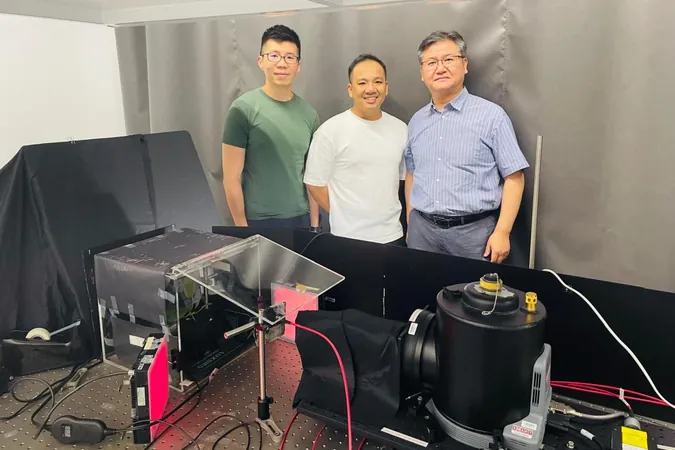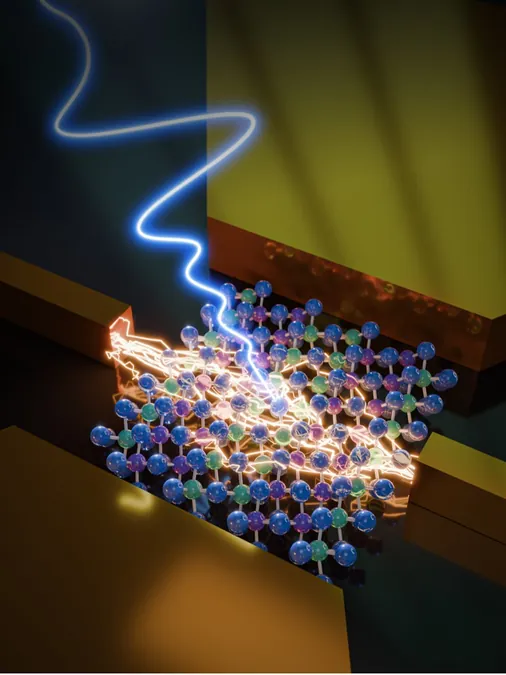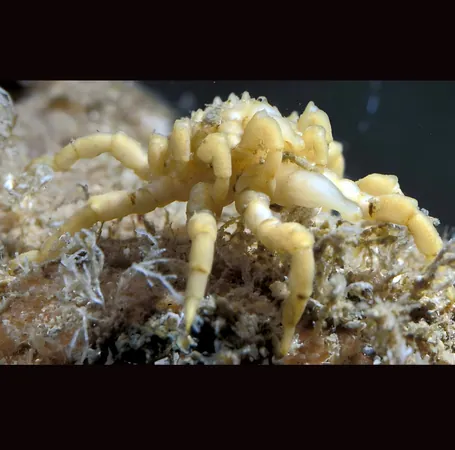
Revolutionary Nanosensor Set to Transform Plant Growth Monitoring
2025-06-09
Author: Sarah
Discover the Future of Agriculture with a Game-Changing Nanosensor
A groundbreaking innovation from a team of researchers at the Disruptive and Sustainable Technologies for Agricultural Precision (DiSTAP), part of the Singapore-MIT Alliance for Research and Technology, has unlocked a new era in plant growth optimization. They have developed the world’s first near-infrared fluorescent nanosensor that enables real-time, non-destructive detection of indole-3-acetic acid (IAA)—the key hormone driving plant development and stress responses.
The Power of Auxins: What You Need to Know
Auxins, especially IAA, are vital in regulating essential plant functions like cell division, root and shoot development, and responses to environmental stress such as light and drought. External factors can drastically affect auxin levels: insufficient light can hinder its movement, temperature fluctuations can alter its production, and drought can disrupt hormonal balance. If plants can’t manage their auxins effectively, they might underperform or fail to adapt to changing conditions.
A Breakthrough in Plant Hormone Detection
Traditional methods of detecting IAA, such as liquid chromatography, require invasive sampling that damages the plant. Additionally, these conventional techniques can only indirectly measure IAA's effects rather than detecting it outright, and they often lack universal applicability among different plant species. The newly devised nanosensor represents a revolutionary change, as it tracks auxin levels in live plants with unprecedented precision and without genetic modification.
Real-Time Insights for Farmers and Researchers
By employing near-infrared imaging, this nanosensor monitors IAA fluctuations across plant tissues like leaves and roots, overcoming challenges posed by chlorophyll interference. This means farmers can gain reliable, real-time insights into plant health, allowing them to make smarter, data-driven decisions regarding irrigation and nutrients, ultimately boosting crop yields and resilience against stress.
A Tool for the Future of Sustainable Farming
“We need innovative technologies to combat global food insecurity and climate change,” emphasizes Michael Strano, a leading researcher at DiSTAP. “This sensor not only promises early detection of plant stress but can also finely tune growth conditions in urban farms, optimizing both yield and sustainability.”
Documenting a Scientific Milestone
The development of this groundbreaking nanosensor has been detailed in the paper titled "A Near-Infrared Fluorescent Nanosensor for Direct and Real-Time Measurement of Indole-3-Acetic Acid in Plants," published in ACS Nano. The sensor incorporates single-walled carbon nanotubes within a specially designed polymer, allowing it to detect IAA through shifts in near infrared fluorescence.
Not Just a One-Trick Pony: Expanding Applications
Successfully tested on various plant species such as Arabidopsis and spinach, this technology could soon be used to gather comprehensive insights into plant physiology by detecting a range of hormonal markers concurrently. Duc Thinh Khong, co-author of the study, notes, “This contributes to a suite of non-destructive tools to monitor plant health.”
Looking to the Future: Precision Agriculture Awaits
The research team envisions integrating multiple sensing platforms to develop a thorough hormonal signaling profile, enhancing our understanding of plant responses to stress and advancing precision agriculture practices. Collaborative efforts with urban farming industrial partners aim to bring this cutting-edge technology from the lab into real-world applications.
A Bright Future for Global Agriculture
Supported by Singapore's National Research Foundation, this exciting research could pave the way for better, more sustainable farming practices worldwide. The fight against food insecurity is on, and this nanosensor might just be the secret weapon farmers need.




 Brasil (PT)
Brasil (PT)
 Canada (EN)
Canada (EN)
 Chile (ES)
Chile (ES)
 Česko (CS)
Česko (CS)
 대한민국 (KO)
대한민국 (KO)
 España (ES)
España (ES)
 France (FR)
France (FR)
 Hong Kong (EN)
Hong Kong (EN)
 Italia (IT)
Italia (IT)
 日本 (JA)
日本 (JA)
 Magyarország (HU)
Magyarország (HU)
 Norge (NO)
Norge (NO)
 Polska (PL)
Polska (PL)
 Schweiz (DE)
Schweiz (DE)
 Singapore (EN)
Singapore (EN)
 Sverige (SV)
Sverige (SV)
 Suomi (FI)
Suomi (FI)
 Türkiye (TR)
Türkiye (TR)
 الإمارات العربية المتحدة (AR)
الإمارات العربية المتحدة (AR)